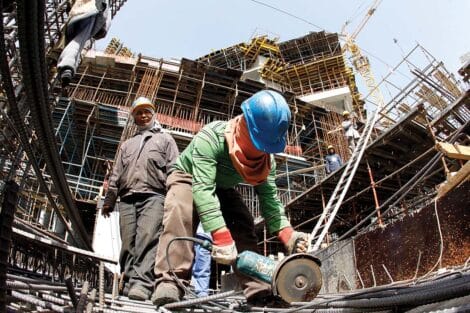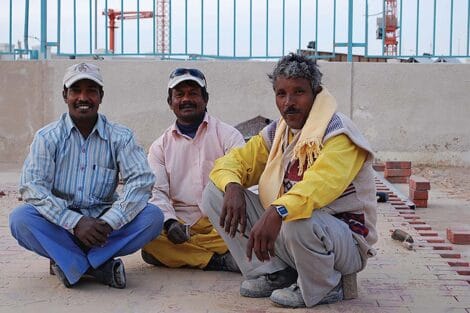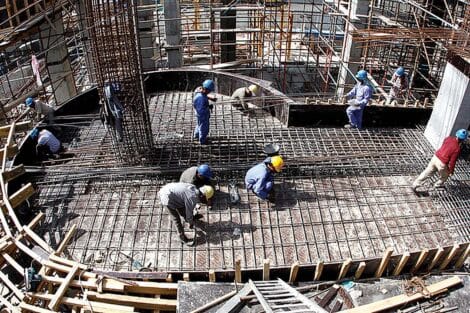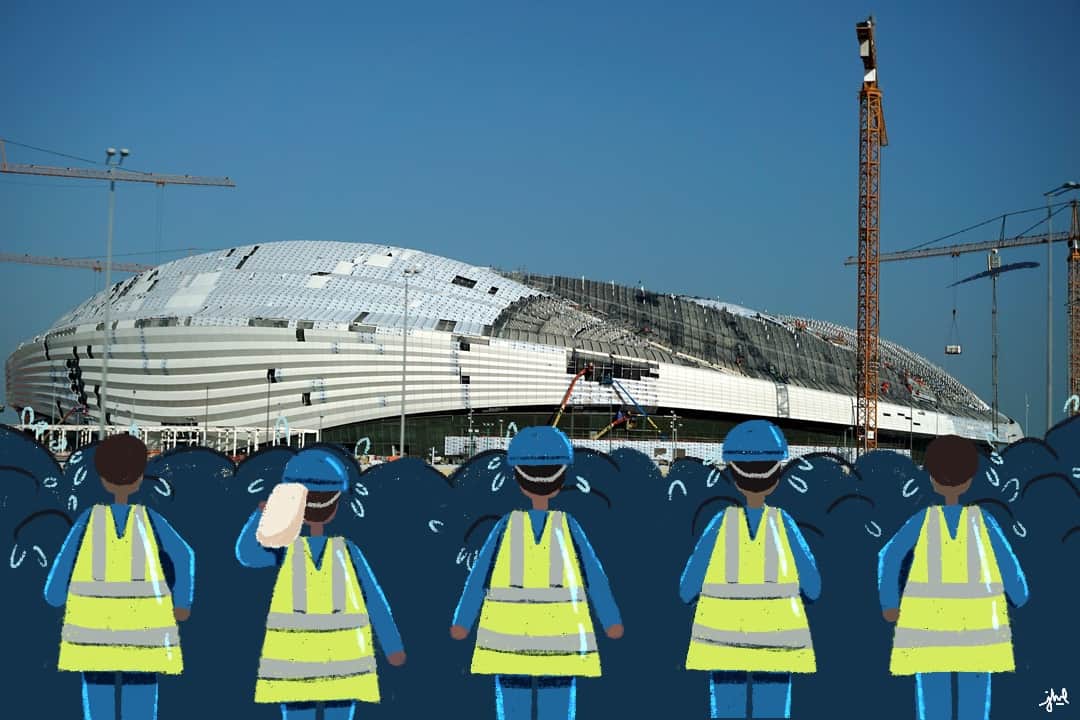In the deep dark recesses of FIFA’s 2010 evaluation report on potential 2022 World Cup locations lies a statement about one candidate in particular:
“If Qatar is awarded the hosting rights, FIFA’s legal risk appears to be low. All requirements for contractual documents have been met, but additional specific undertakings and securities are necessary given the special situation in and the special hosting concept of Qatar. The necessary government support has been secured.”
Many are starting to wonder if FIFA made a misjudgement granting Qatar hosting rights.
If awarding the World Cup to Qatar opened up the proverbial can of worms, instances from the past few weeks have indicated that the can has spilled and the worms are crawling all over the place. From Qatar’s beer ban to its controversial ban of the “One Love” armband — a symbol of inclusivity — fans, players, and companies have been questioning their support for the 2022 Qatar World Cup.
In particular, though, some of the most notable news occurred before the ball ever touched a Qatari soccer pitch: it started with the construction of the seven World Cup stadiums and the hands that belonged to the people that slaved away. As part of The Varsity’s Home issue, we took a look into the Qatari migrant worker problem, and how we could possibly fix it.
What’s the use?
A migrant worker, much like the name denotes, is a worker who provides labour abroad, in a country in which they do not have citizenship. According to the Human Rights Watch, this situation frequently leads to exploitation involving abuse, harsh working conditions, and often death.
In an interview with The Varsity, Michelle Buckley, an associate professor in UTSC’s Department of Human Geography and an expert on migrant-worker relations in the Gulf states, explained the importance of migrant workers: “The population of Gulf states like Qatar and the UAE and so on [is] actually quite small, and so they relied on enormous numbers of non-citizen workers.”
Buckley stressed that the migrant workers in question aren’t only the construction workers that you see in mainstream media. Migrant workers in Qatar work in a range of sectors, from retail to law enforcement to domestic work, and account for as much as 85 per cent of Qatar’s population of 3 million people.

A worker cuts down on a wire while building a stadium. INTERNATIONAL LABOUR ORGANIZATION via FLICKR
“States really wouldn’t function the way they do without the importation of huge amounts of often lower wage, migrant labour,” Buckley said.
In the midst of outcry, it is important to note that the concept of migrant work is not objectively negative, and these workers actually support the economies of nations from where they emigrate, as they send funds back home, called remittances.
“The flow of remittances back from the Gulf region… for countries like Nepal, is an absolute lifeline,” Buckley explained. These remittances are not only a lifeline for the families of the migrant workers but Nepal’s economy as well.
Nepal sends more than 25 per cent of its population overseas, which accounts for a quarter of the country’s national income. Cutting out this source of income entirely would most likely result in a complete upheaval of Nepal’s economy. Overseas labour is not the problem here, but rather the blatant maltreatment of foreign-born workers. One of the reasons overseas labour is so lucrative is due to the ignorance of human rights issues.
While migrant work has been going on for a long time, it is important to note that Qatar isn’t the only Gulf state, or nation in general, to have immigration and work policies that fail to protect migrant workers. “Conditions in Qatar may be quite similar in many other countries in the world so in that sense the media and scholars need to be careful of making Qatar an ‘exceptional’ case,” Buckley stated. Many countries have problems, and in light of the anti-Arab sentiments that are flying around, it is important to continue to hold states, policies, and events accountable regardless of their geographical location.
However, it is also important not to allow Qatar to hide behind the shield of other countries’ problems. “We need to take apart FIFA’s ‘whataboutist’ claims about the sins of other nations and hone in on the specific calls being made by workers,” Buckley concluded.
“I don’t think we can really rely on any numbers that the state might give us”
To complicate things further, reports on the exact number of migrant worker deaths in Qatar have been inconsistent, with mainstream media grasping for salacious headlines on one end, and Qatari officials supposedly underrepresenting numbers on the other. On November 29, Hassan al-Thawadi, the secretary-general of the World Cup organising committee, noted that worker deaths relating to the construction and preparation for the World Cup were “between 400 and 500.” These numbers are significantly smaller than the Guardian’s reported 6500, which is the total number of deaths of migrant workers since Qatar was announced as the host for the tournament — not specific to the constructions of the venues. This drastic inconsistency within the reporting of numbers can be confusing to the public.

Three migrant workers smile at the camera on site. COURTESY of WBUR BOSTON’S NPR NEWS via FLICKR
“I don’t think we can really rely on any numbers that the state might give us,” Buckley responded when asked about the accuracy of the reported numbers of migrant worker deaths in Qatar. For example, heat stress is posited to be a leading cause for the deaths of migrant workers, but Qatar does not include that in its death count.
“A worker may work on a site, feel unwell, leave the site, go back to their dorm, and hours later they might pass away because the heat of course is really brutal in Qatar… there’s really no way to know [the true cause of deaths] for sure,” Buckley said.
With the 2022 World Cup lighting up living rooms around the world, it’s essential that we identify a solution. In order to do this, it’s essential to discern the groups that can facilitate change in the first place.
On lack of transparency: “FIFA is definitely following the money”
“We do not react based on whatever pressure we receive; we act when we decide the time to act has come,” FIFA president Gianni Infantino said when he faced the world with an hour-long speech on the eve of the World Cup’s opening ceremony.
Infantino addressed the fact that Qatar had a legal obligation to provide compensation to workers in need. However, Human Rights Watch refuted Infantino’s statements, saying that in reality, bureaucracy makes it increasingly difficult for workers to get this kind of compensation. It also pointed out that, in a particular instance, it took four years for a worker to get compensation from Qatar for months of unpaid wages, by which time the long wait took a toll on his health.
Simon Darnell, an associate professor at U of T’s Faculty of Kinesiology & Physical Education, highlighted this notion, explaining that “the organizations that are in charge, like the IOC and FIFA… always stop short of calling out the host countries in response to these issues.”
The lack of transparency from FIFA and the Qatari government about human rights — from true death counts to policy outcomes — seems to be a key problem that, if resolved, could result in the betterment of human rights conditions at mega-sporting events.
Another solution that Darnell put forth would be a permanent site for the mega-sporting events, that the games return to after every interval break. “What if we stopped building the facilities for the World Cup or the Olympics every time we host the games… we could have the Olympics in Athens every four years and the facilities would be there.” Darnell outlined. “There’s less money in that, obviously, but the environmental benefits would be clear and we couldn’t fall into this trap of bidding for games.”
“Once the games start, the contradictions stand still”
Another group that could draw attention to the migrant worker issues in Qatar is athletes themselves. The World Cup has been a hub for this. A prime example is the German team placing their hands over their mouths before a group stage game against Japan in protest of FIFA’s restriction to allow players to wear the One Love armband.
Germany’s team photo before their match vs. Japan 🤭 pic.twitter.com/scBY1enYKV
— ESPN FC (@ESPNFC) November 23, 2022
In a world where the popularity of athletes is amplified through social media in an unprecedented manner, Bruce Kidd, former Olympian distance runner and professor emeritus of Sport and Public Policy at U of T highlighted the importance for athletes to speak out.
“I think the days when athletes can put their blinders on and say, ‘All I’m going to do is focus on my sport’ are over.” Kidd highlighted, when asked about the importance of athlete advocacy in light of human rights issues.
Kidd reflected on his rise to fame in the 1960s, which he managed to take advantage of by using his voice for a purpose. “I was a prominent athlete in the early 1960s,” Kidd said, referring to his hallmark win against Murray Halberg, 18 national senior track and field championships, and widespread fame. With his background as an associate sports editor of The Varsity and columnist of the Canadian University Press, Bruce explained, “I was used to making my voice known, and I landed in support of the first voices for gender equity, the Olympic Movement for Human Rights… I’ve been a lifelong ally.”
Perhaps if more athletes step up as Kidd did in the 1960s, the scene will shift.
All for one and one for all
The role of unions, while often not addressed, could potentially mitigate migrant worker abuse. Building and Wood Worker’s International (BWI) is a federated union of 351 trade unions that represents members in 127 countries. Buckley noted that BWI could be a conduit of change, compared to other international organizations like the United Nations: “The work of internationally federated unions like BWI is so crucial because they do represent workers.” From training workers in Qatar to become paralegals, to advocating for a migrant worker centre, BWI is pushing for change.

Migrant workers lay down a base at a construction site in Doha. COURTESY OF INTERNATIONAL LABOUR ORGANIZATION via FLICKR
What now?
When the 2022 World Cup ends on December 18, fans and teams will go home, but migrant workers won’t. Hopefully, this article has shed some light on what such reforms look like.


